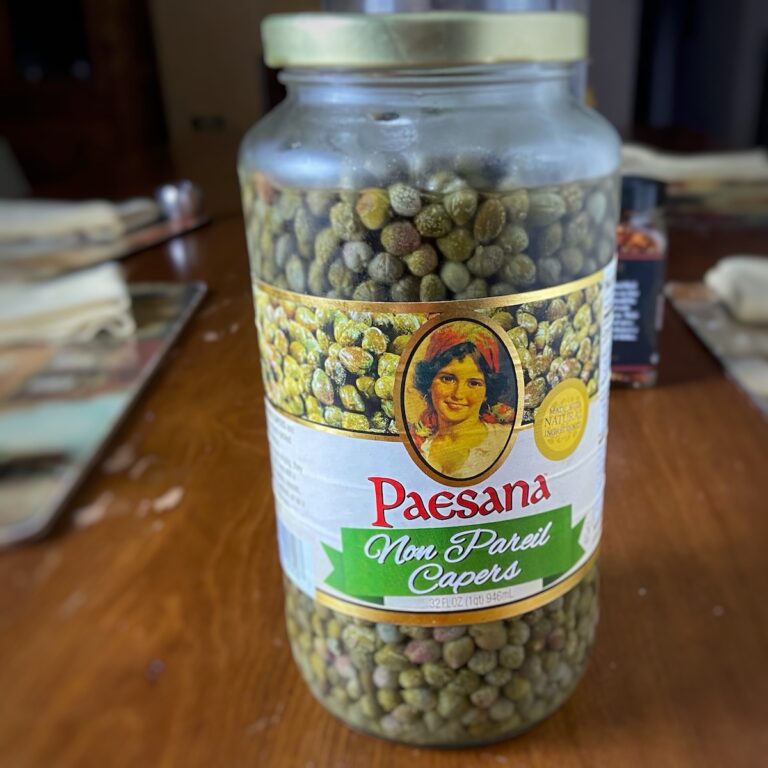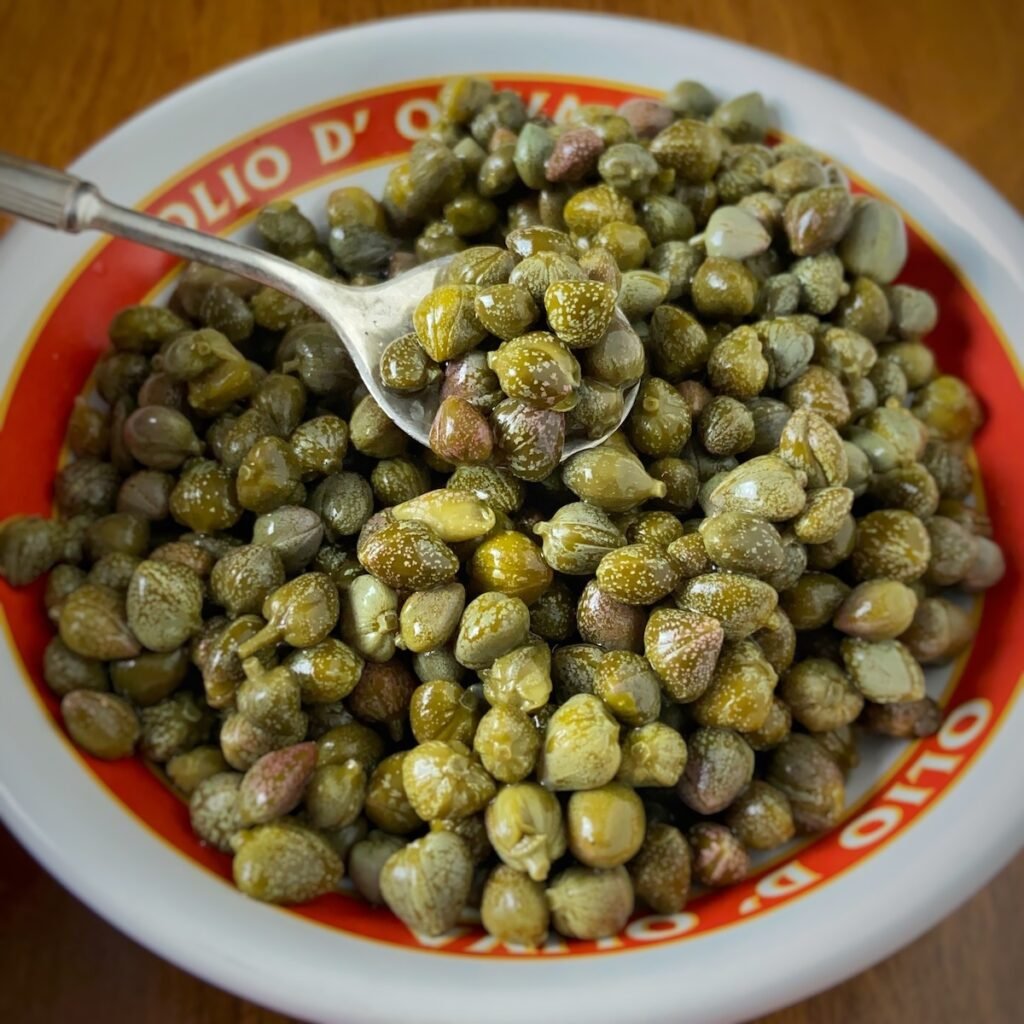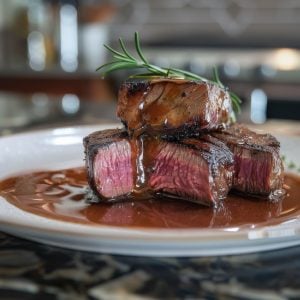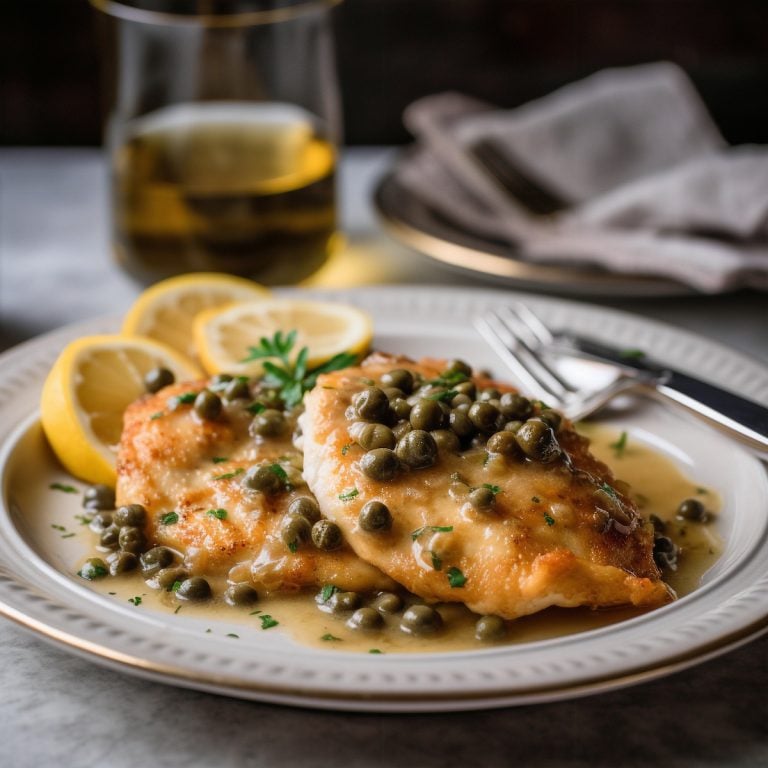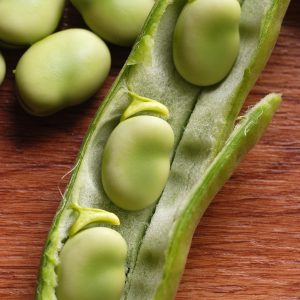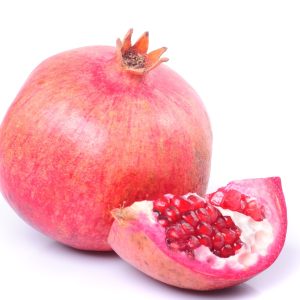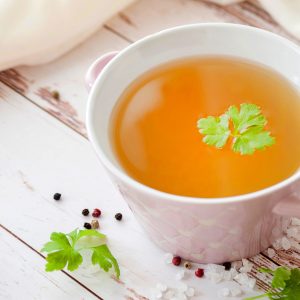What Are Capers, Where Do They Come From and What Do They Taste Like?
Capers pack a punch far beyond their small size. These tiny green buds, harvested from the caper bush, add a burst of briny, floral flavor to countless dishes.
You’ll often spot them tucked into pasta puttanesca, scattered over bagels with lox, or stirred into creamy sauces for fish and chicken. But capers offer much more than a tangy accent—they bring depth, balance, and brightness to recipes that might otherwise feel heavy or flat.
Their bold taste comes from a unique curing process. The buds are dried and then preserved in salt or brine, enhancing their natural sharpness while softening bitterness.
As you cook with capers, you’ll discover their versatility: they complement Mediterranean dishes, enrich vinaigrettes, and even shine in unexpected places like potato salads or roasted vegetables. Whether you’re new to cooking with capers or looking for fresh ways to use them, this post will guide you.
You’ll learn where capers come from, how they’re prepared, and which dishes they best enhance. We’ll also explore simple tips for storing and using them, so you can enjoy their vibrant flavor in your kitchen.
Ready to give your cooking a flavorful boost? Let’s dive into the world of capers! Let me start by saying I love capers, but not as much as my oldest daughter, Nell. She is a caper fanatic. There are very few meals she doesn’t bring out the giant jar of capers from the refrigerator to the table to spoon some of those mini salty morsels onto her food.
On the other hand, my wife and youngest daughter Maddie are not fans. They’ll tolerate them if they have to in a dish like chicken piccata, but otherwise, no thanks.
Caper Sizes, Texture, Flavor
Capers come in various sizes, ranging from 1/4 inch (approximately the size of a small pea) to over 1/2 inch, which is about the size of a small olive. Here are some sizes and their corresponding names.
| Name | Size (Inches) | Size (Millimeters) | Common Culinary Uses | Texture & Flavor |
|---|---|---|---|---|
| Nonpareilles | 0.15–0.25 in | 4–7 mm | Most popular; ideal for sauces, pasta, salads, fish, dressings | Delicate, tender texture; bright, tangy flavor |
| Surfines | 0.25–0.31 in | 7–8 mm | Great for pasta dishes, chicken piccata, tapenade | Slightly firmer than nonpareilles; balanced briny taste |
| Capucines | 0.31–0.35 in | 8–9 mm | Used in stews, braises, larger meat dishes | Mildly firm; more developed flavor with subtle bitterness |
| Capotes | 0.35–0.43 in | 9–11 mm | Suited for robust sauces, antipasti, stuffed dishes | Firm and meaty; pronounced briny and earthy notes |
| Fines | 0.43–0.47 in | 11–12 mm | Often used whole in Mediterranean dishes, pickled platters | Bold flavor; firmer, chewier texture |
| Grusas | 0.47 in + | 13+ mm | Best served whole in antipasto platters, or as garnish for hearty mains | Very bold, concentrated flavor; dense, chewy texture |
How Best Used in Cooking
| Use | Description |
|---|---|
| Sauces | Stir into pan sauces for fish, chicken, or veal (like lemon caper sauce) for tangy brightness. |
| Salads | Toss into green salads, pasta salads, potato salads, or Niçoise for salty, briny contrast. |
| Tapenade & Spreads | Blend into olive tapenade or other spreads for depth and complexity. |
| Pasta Dishes | Mix into pasta sauces, especially tomato-based or seafood pastas, for a pop of acidity. |
| Meat & Poultry | Add to braises or pan sauces for meats like pork tenderloin, veal, and lamb. |
| Seafood | Complement grilled or roasted fish and seafood with caper butter or salsa. |
| Egg Dishes | Sprinkle over deviled eggs, omelets, or scrambled eggs for zesty flavor. |
| Pizza & Flatbreads | Scatter over pizzas or flatbreads for a salty accent. |
| Antipasto & Platters | Serve whole on charcuterie, antipasto, or mezze platters. |
| Vegetable Dishes | Pair with roasted, grilled, or sautéed vegetables—especially eggplant, peppers, and zucchini. |
| Bread & Baked Goods | Fold into savory breads, muffins, or focaccia for a burst of umami. |
Classic Dishes Featuring Capers
| Dish | Description | Wine Pairing |
|---|---|---|
| Chicken Piccata | Sautéed chicken cutlets in a lemon-butter sauce with capers | Pinot Grigio, Sauvignon Blanc |
| Pasta Puttanesca | Pasta with tomato sauce, anchovies, olives, capers, garlic, and chili flakes | Chianti, Nero d’Avola |
| Vitello Tonnato | Chilled veal slices with creamy tuna and caper sauce | Gavi, Verdicchio |
| Bagels with Lox and Capers | Smoked salmon with cream cheese, red onion, capers on a bagel | Champagne, Dry Riesling |
| Sicilian Caponata | Sweet and sour eggplant stew with capers, olives, celery, and tomatoes | Frappato, Cerasuolo di Vittoria |
| Tuna Niçoise Salad | Salad of tuna, green beans, potatoes, olives, eggs, and capers | Rosé from Provence, Sauvignon Blanc |
| Sautéed Sole with Lemon and Capers | Delicate fish fillets with lemon-caper butter sauce | Chablis, Vermentino |
| Tapenade | Olive, caper, anchovy, and garlic spread | Côtes du Rhône, Garnacha |
| Lemon Caper Sauce | Versatile sauce of lemon, butter, capers, and parsley, used for fish, poultry, or vegetables | Vermentino, Pinot Bianco |
| Pan Roasted Sea Bass | Crispy-skinned sea bass with sautéed cherry tomatoes, capers, garlic, and herbs | Albariño, Verdicchio |
| Pork Tenderloin | Roasted pork tenderloin with a bright pan sauce of lemon, capers, and green olives | Pinot Noir, Grenache Blanc |
What Are Capers?
Capers are a small, flavorful addition to many dishes that can add a unique zest and tang to a wide range of cuisines. While they may not be a common ingredient in every kitchen, they are worth seeking out for their versatility and delicious taste.
First, let’s talk about what exactly capers are. Capers are the small, unopened flower buds of the Capparis spinosa plant, which is native to the Mediterranean region. These buds are picked by hand and then pickled in a vinegar or brine solution. The result is a small, tangy condiment that can add flavor to a wide range of dishes.
One of the most popular uses for capers is in Italian cuisine. They are often used in dishes like chicken piccata and pasta puttanesca, adding a sour and briny flavor that pairs well with these dishes’ rich, savory flavors. Capers are also commonly used in French and Spanish cuisine, where they are often paired with seafood or used as a garnish for cocktails.
Not to be confused with a caper berry that grows to the size of an olive and is a caper that is allowed to mature. So capers are the buds before they turn into flowers that eventually become fruit.
Freshly picked capers are not to be eaten. Like fresh olives, they are incredibly bitter and must be pickled before they are edible.
Caper FAQ
What do they taste like?
So, what do capers taste like? As mentioned earlier, capers have a tangy, briny flavor that is somewhat sour and slightly salty. In addition, they have a firm texture and a slightly crunchy bite, which makes them a great addition to many dishes. The flavor of capers can be described as a combination of olives and pickles, with a slightly bitter and herbaceous taste.
Where do they come from?
Capers are native to the Mediterranean region, particularly countries such as Italy, Spain, and France. They are produced from the Capparis spinosa plant’s flower buds, a type of shrub that grows in rocky, arid areas. The buds are picked by hand and then pickled in a vinegar or brine solution to preserve them.
Capers have been used as a condiment and garnish for centuries and have a long history in the cuisines of the Mediterranean region. They were originally used as a substitute for black pepper, which was expensive and not widely available at the time. Today, capers are used in a variety of dishes and cuisines around the world and are widely available in most grocery stores.
Check out this source if you want to learn more about capers and where they come from.
Are capers a fruit or a vegetable?
Trick question. Capers are not a fruit or a vegetable but rather the unopened flower buds of the Capparis spinosa plant.
The Capparis spinosa plant is a type of shrub that is native to the Mediterranean region and is known for its small, tangy flower buds. The flower buds are picked by hand and then pickled in a vinegar or brine solution to preserve them, resulting in the condiment known as capers.
How are capers sold?
Capers are typically sold in jars or cans and can be found in the condiment section of most grocery stores. They are available in various sizes, ranging from small, delicate capers to larger, more flavorful ones. The smaller capers tend to be more delicate in flavor, while the larger ones have a more robust taste.
When shopping for capers, paying attention to the size and type you are purchasing is essential. The most common type of capers is nonpareil capers, which are the smallest and most delicate variety.
These capers are typically used in more refined dishes where their subtle flavor is desired. Larger capers, such as “stem” or “flower” capers, have a more robust and assertive flavor and are typically used in dishes where a more robust caper flavor is desired.
In addition to the size and type of capers, it’s also important to pay attention to the brine or vinegar solution that they are pickled in. Some capers are pickled in a vinegar solution, which gives them a slightly sour and tangy flavor.
Others are pickled in a brine solution, which gives them a saltier and more briny flavor. Both types of capers can be used in various dishes, so it’s up to personal preference which type to choose.
How to Store Capers
Capers can be stored in your pantry unopened for about six months. Once opened, you’ll want to refrigerate them to keep them fresh. It’s essential to ensure the capers are entirely submerged in the liquid in the jar and that you keep the jar closed with a tight-fitting cap.
I’m not sure exactly how long they can stay in the refrigerator, but our giant bottle typically lasts 6 to 9 months.
Some of My Favorite Ingredients
